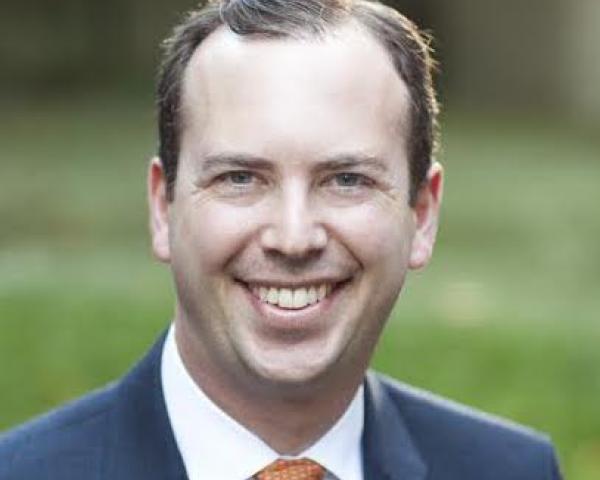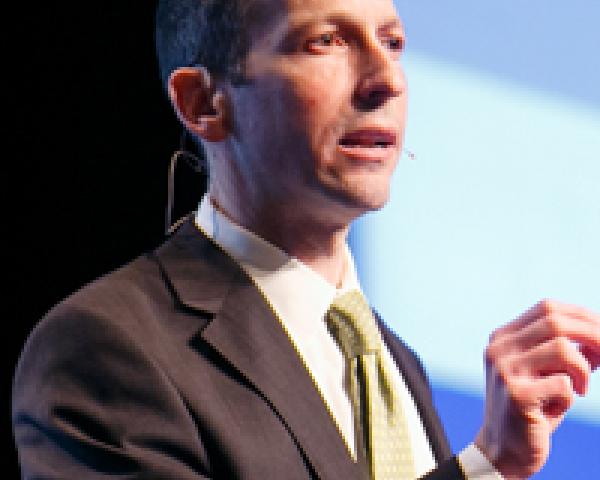Hurricane Harvey's Lesson for Insurtechs
Insurance 1.0 focused on distribution, and Insurance 2.0 on efficiency. Insurance 3.0 will have to be more thoughtful on product innovation.

Insurance 1.0 focused on distribution, and Insurance 2.0 on efficiency. Insurance 3.0 will have to be more thoughtful on product innovation.

Get Involved
Our authors are what set Insurance Thought Leadership apart.
|
Partner with us
We’d love to talk to you about how we can improve your marketing ROI.
|

Daniel C. Price is co-founder, president and CEO of OneTitle, an exclusively direct title insurer, which offers title insurance at as much as 25% less than major competitors.
Once the leaders in data-driven decisions, many insurers now find themselves behind the curve because of digital advances.

Get Involved
Our authors are what set Insurance Thought Leadership apart.
|
Partner with us
We’d love to talk to you about how we can improve your marketing ROI.
|

Denise Garth is senior vice president, strategic marketing, responsible for leading marketing, industry relations and innovation in support of Majesco's client-centric strategy.
Traditionally, the insurance market has shied away from covering events like theft of trade secrets or damage to intellectual property.

Get Involved
Our authors are what set Insurance Thought Leadership apart.
|
Partner with us
We’d love to talk to you about how we can improve your marketing ROI.
|

Byron Acohido is a business journalist who has been writing about cybersecurity and privacy since 2004, and currently blogs at LastWatchdog.com.
Maxine (the cartoon character) says it best, “Change is good as long as I don’t have to do anything different.”

Get Involved
Our authors are what set Insurance Thought Leadership apart.
|
Partner with us
We’d love to talk to you about how we can improve your marketing ROI.
|

Mike Manes was branded by Jack Burke as a “Cajun Philosopher.” He self-defines as a storyteller – “a guy with some brain tissue and much more scar tissue.” His organizational and life mantra is Carpe Mañana.
The reality is that mentoring doesn’t have to be a “time-suck” for a manager, personally, despite its reputation for being exactly that.

Get Involved
Our authors are what set Insurance Thought Leadership apart.
|
Partner with us
We’d love to talk to you about how we can improve your marketing ROI.
|

Julie Littlechild is a speaker, a writer and the founder of AbsoluteEngagement.com. Littlechild has worked with and studied top-producing professionals, their clients and their teams for 20 years.
Insurers that partner with an insurtech focused on a narrow goal can find ways to quickly expand that relationship.

Get Involved
Our authors are what set Insurance Thought Leadership apart.
|
Partner with us
We’d love to talk to you about how we can improve your marketing ROI.
|

Eric Gewirtzman, CEO and co-founder of Bolt Solutions, is a leading force for innovation in the insurance industry, blending more than 20 years of expertise with extensive experience in creating and delivering game-changing insurance-related products and services.
The concept of smart cities is gaining momentum; many cities around the world are developing strategies and implementing projects.

It seems as if everything in the world is becoming “smart” – with intelligent devices and artificial intelligence automating activities and providing new capabilities. There are thousands of examples of “things” that contain embedded sensors or chips that generate information and enable control through apps or automated actions. These come together as part of the Internet of Things (IoT) in various ecosystems – such as smart homes, connected cars, smart farms, and many others. One of the most significant new ecosystems developing has to do with smart cities. The concept of smart cities is gaining momentum, and many cities around the world are developing smart city strategies and implementing specific projects. In fact, it is becoming evident that smart cities are catalysts for the movement to a connected world.
See also: Smart Things and the Customer ExperienceSMA’s recent research report, Smart Cities and Insurance: Exploring the Implications, provides a definition for a smart city. It also profiles leading smart cities around the world, identifies specific benefits and projects underway, discusses how each insurance line of business will be affected, and identifies insurers that are already involved in smart city initiatives. Since the concept means different things to different people, SMA has developed a broad definition:
“A smart city is one that is leveraging connected world technologies to gather, analyze, and act upon real-time data to improve the lives of citizens; enhance mobility; create safer environments; optimize energy consumption and waste management; and contribute to the urban center of the future.” Strategy Meets Action 2017
The findings of the SMA research reinforce the potential for smart city solutions:
Smart cities may seem like a far-off dream with limited implications for insurance in the next few years. It would be a mistake to take this view. Over half of the world’s population already live in cities, and that percentage will inevitably increase. Some cities already have dozens or scores of smart projects underway, many of which are aimed at reducing vehicle accidents, thwarting crime, improving health, avoiding or mitigating losses to property due to a variety of perils, and many other areas that will result in reduced risks. At the same time, the introduction of new technologies may introduce new risks or increase certain existing risks (like cyber-risk). All in all, it is imperative that insurers take active roles in collaborating with cities and smart city organizations in the reshaping of the modern city.
Get Involved
Our authors are what set Insurance Thought Leadership apart.
|
Partner with us
We’d love to talk to you about how we can improve your marketing ROI.
|

Mark Breading is a partner at Strategy Meets Action, a Resource Pro company that helps insurers develop and validate their IT strategies and plans, better understand how their investments measure up in today's highly competitive environment and gain clarity on solution options and vendor selection.
Without a structured stress management program, employees will deal with stress in other ways (e.g. comfort food, alcohol, drugs, smoking).

 If your plan is not properly dealing with member stress, you will increase the cost of treating the manifestations of stress in those body systems where health costs are covered. These correlations are why well-being is a growing area of interest. Providing support programs for the whole person whether at work or at home will lower health costs and improve productivity.
The Occupational Safety and Health Administration (OSHA) has declared stress a "hazard of the workplace.” There are at least three separate, but related costs of stress in the workplace:
1. Direct Mental Health Costs – as separate diagnoses these costs can range from low to high costs.
2. Co-Morbid Condition Costs – many times the more obvious physical health symptoms are treated, but the underlying mental health issue is ignored.
3. Indirect Corporate Costs – these are costs from absenteeism, disability, unscheduled sick days, loss of teaming, relationship conflicts, etc.
With the assistance of many national mental health experts and organizations, Healthcare Visions, Inc. has organized a chart showing the relationships among the three types of corporate costs.
If your plan is not properly dealing with member stress, you will increase the cost of treating the manifestations of stress in those body systems where health costs are covered. These correlations are why well-being is a growing area of interest. Providing support programs for the whole person whether at work or at home will lower health costs and improve productivity.
The Occupational Safety and Health Administration (OSHA) has declared stress a "hazard of the workplace.” There are at least three separate, but related costs of stress in the workplace:
1. Direct Mental Health Costs – as separate diagnoses these costs can range from low to high costs.
2. Co-Morbid Condition Costs – many times the more obvious physical health symptoms are treated, but the underlying mental health issue is ignored.
3. Indirect Corporate Costs – these are costs from absenteeism, disability, unscheduled sick days, loss of teaming, relationship conflicts, etc.
With the assistance of many national mental health experts and organizations, Healthcare Visions, Inc. has organized a chart showing the relationships among the three types of corporate costs.
 Companies can no longer treat stress, depression, or any mental illness as a single diagnosis. Because of coexisting mental illnesses, many employees will not effectively recover from or stabilize chronic and persistent conditions such as diabetes, asthma, heart conditions, hypertension, or cancer unless an effective stress management program is implemented.
A 2005 study for Dupont Company by the University of Pennsylvania showed that depression, when measured by its impact on total costs (direct and indirect costs), was the highest corporate cost medical condition. The second highest total cost was from musculoskeletal issues that likely also involved stress related costs.
See also: Consumerism: Good, Bad, Future
Medical, clinical, and medication therapies have advanced such that clinical depression and other mental health conditions have cure rates equal to and greater than many medical conditions. Clinical depression can be cured. Treatments work. Medications are effective. No company, large or small, can avoid the costs of depression. Divorce, disability, and violence in the workplace can hit anyone at anytime. According to the Institute of Medicine 30,000 people die each year from suicide, and 90% had diagnosable and treatable depression. For a small employer the results can be devastating if a key employee or executive suffers from clinical depression.
Tom Johnson, former CEO of CNN News, likes to say, “If a company’s computers crashed and corporate production ground to a halt, the CEO would demand immediate action to re-establish the “corporate brains.” In developing a “knowledge-based” workforce, it is just as important for CEOs to take care of mental health and the “central computer” – the brain - within each employee.”
Most employers do not understand the complexities of clinical mental health diagnoses. They do not know what it means to have schizophrenia, a somatoform disorder, a factitious disorder, or get a multi-axial assessment. Tom Johnson understood as he often suffered from serious bouts of clinical depression. Tom has dedicated his life to helping others deal with the debilitating effects of depression.
Case Study
As an actuary and mathematician, I was trained in numbers and actuarial science. Many of you may also be analysts, doctors, lawyers, CEOs, economists, or researchers. Let’s throw away the numbers for a moment and look at the lives of real people.
Let me tell you about a young man, age 30, who suffered multiple inherited physical problems: a blood disorder, clotting concerns, pulmonary hypertension, and other unfathomable sources of pain and suffering. Combined with depression and the stigma of an emotional disorder, this young man was frequently non-compliant with care and treatment. Unlike other physical illnesses, depression typically causes the patient to avoid care. He pushed away the very help that was needed. He pushed away family support and friends that cared.
No young strapping 6’5” 260 pound young man wants his forehead stamped with the stigma of mental illness. He was not going to be classified as “crazy”, see a “shrink”, or go to a “nut house” for care. No, he was a high school basketball star with the athletic promise most boys just dream about. In his mind, he didn’t need care, he was who he was. He didn’t accept or understand chemical imbalances. In his mind, "Real men are strong enough."
In 2005 the years of depression and physical decline took its toll. The death certificate read pulmonary hypertension. But, I can tell you the real cause was stigma and major depression that prevented this young adult from seeking or accepting the medical and life saving care that he needed.
Chris Golden was my step-son. His mother and I buried Chris on May 5, 2005. Look at all the ROI numbers, but never forget. This is not about numbers. It’s about people and saving lives. It’s about the Chris Goldens of the world.
Companies can no longer treat stress, depression, or any mental illness as a single diagnosis. Because of coexisting mental illnesses, many employees will not effectively recover from or stabilize chronic and persistent conditions such as diabetes, asthma, heart conditions, hypertension, or cancer unless an effective stress management program is implemented.
A 2005 study for Dupont Company by the University of Pennsylvania showed that depression, when measured by its impact on total costs (direct and indirect costs), was the highest corporate cost medical condition. The second highest total cost was from musculoskeletal issues that likely also involved stress related costs.
See also: Consumerism: Good, Bad, Future
Medical, clinical, and medication therapies have advanced such that clinical depression and other mental health conditions have cure rates equal to and greater than many medical conditions. Clinical depression can be cured. Treatments work. Medications are effective. No company, large or small, can avoid the costs of depression. Divorce, disability, and violence in the workplace can hit anyone at anytime. According to the Institute of Medicine 30,000 people die each year from suicide, and 90% had diagnosable and treatable depression. For a small employer the results can be devastating if a key employee or executive suffers from clinical depression.
Tom Johnson, former CEO of CNN News, likes to say, “If a company’s computers crashed and corporate production ground to a halt, the CEO would demand immediate action to re-establish the “corporate brains.” In developing a “knowledge-based” workforce, it is just as important for CEOs to take care of mental health and the “central computer” – the brain - within each employee.”
Most employers do not understand the complexities of clinical mental health diagnoses. They do not know what it means to have schizophrenia, a somatoform disorder, a factitious disorder, or get a multi-axial assessment. Tom Johnson understood as he often suffered from serious bouts of clinical depression. Tom has dedicated his life to helping others deal with the debilitating effects of depression.
Case Study
As an actuary and mathematician, I was trained in numbers and actuarial science. Many of you may also be analysts, doctors, lawyers, CEOs, economists, or researchers. Let’s throw away the numbers for a moment and look at the lives of real people.
Let me tell you about a young man, age 30, who suffered multiple inherited physical problems: a blood disorder, clotting concerns, pulmonary hypertension, and other unfathomable sources of pain and suffering. Combined with depression and the stigma of an emotional disorder, this young man was frequently non-compliant with care and treatment. Unlike other physical illnesses, depression typically causes the patient to avoid care. He pushed away the very help that was needed. He pushed away family support and friends that cared.
No young strapping 6’5” 260 pound young man wants his forehead stamped with the stigma of mental illness. He was not going to be classified as “crazy”, see a “shrink”, or go to a “nut house” for care. No, he was a high school basketball star with the athletic promise most boys just dream about. In his mind, he didn’t need care, he was who he was. He didn’t accept or understand chemical imbalances. In his mind, "Real men are strong enough."
In 2005 the years of depression and physical decline took its toll. The death certificate read pulmonary hypertension. But, I can tell you the real cause was stigma and major depression that prevented this young adult from seeking or accepting the medical and life saving care that he needed.
Chris Golden was my step-son. His mother and I buried Chris on May 5, 2005. Look at all the ROI numbers, but never forget. This is not about numbers. It’s about people and saving lives. It’s about the Chris Goldens of the world.
Get Involved
Our authors are what set Insurance Thought Leadership apart.
|
Partner with us
We’d love to talk to you about how we can improve your marketing ROI.
|

Ronald E. Bachman is the President and CEO of <a href="http://www.healthcarevisions.net">Healthcare Visions</a>, a thought leadership firm dedicated to advancing ideas and policy initiatives that are impacting the U.S. health care market. As an actuary, he has extensive experience in healthcare strategy for payers, providers and employers.
The very metrics that are often used to gauge employee performance might actually discourage the behavior those companies want to promote.

Get Involved
Our authors are what set Insurance Thought Leadership apart.
|
Partner with us
We’d love to talk to you about how we can improve your marketing ROI.
|

Jon Picoult is the founder of Watermark Consulting, a customer experience advisory firm specializing in the financial services industry. Picoult has worked with thousands of executives, helping some of the world's foremost brands capitalize on the power of loyalty -- both in the marketplace and in the workplace.

In the wake of Hurricane Harvey and now Hurricane Irma—and with Hurricane Maria now pummeling the poor Caribbean again while Hurricane Jose looks likely to lash Long Island—it's becoming clear how much people have avoided buying flood insurance and how expensive their decision may be. The question is: Why don't people buy insurance?
The answer seems to be that people often don't think they need insurance and find it expensive. For good measure, people complain about the complexity of insurance and how unpleasant it can be to deal with insurers.
The problem isn't just with flood insurance, either. Far from it. Life insurers, in particular, face dwindling interest, but the lack of demand for insurance is widespread. Some are now saying that flood insurance should be required, and I've heard others suggest that life insurance should be mandatory. Those ideas may or may not make sense—but shouldn't the insurance industry aspire to producing products that people want to buy, not ones that, like auto and home insurance, they only buy when forced to do so?
That's a bit of a roundabout way of saying I think insurtech can solve many of the broad problems facing insurance, slashing costs while reducing complexity and smoothing interactions with insurers. Exhibit A is chatbots.
The bots use artificial intelligence to answer routine questions, generally through some form of texting. Customers don't need to sit on hold for minutes listening to sales pitches, be chastised because they don't have all their documents in front of them, then get transferred twice because it's not clear which department they should be calling. So, customers are happier. Insurers get to save gobs of money because a call center rep can handle five to 10 times as many customers as a rep can now. Insurers are increasingly using chatbots to simplify purchasing, not just service or claims processing—attacking what Brian Duperreault, now CEO of AIG, identified in an ITL article a year and a half ago as the "massive cost of doing business...[that] puts our industry at risk."
An article in the past week by three senior partners at McKinsey identifies the sorts of efficiencies that are possible—a British broker that automatically processes 3,000 claims a day, managed by four employees; a department of 250 employees turned into 110 bots and 11 human supervisors; 160 bots that process 500,000 transactions a month. Remember, the changes make life simpler for customers and come at a time when the insurance industry faces a talent shortage.
At the risk of being repetitive: An article I highlighted last week provides a host of additional examples of how chatbots are ready to take on a huge role.
In addition, Pypestream, the company that we believe is the leader in chatbots in insurance, is announcing that it has received a round of financing from W.R. Berkley and will have a Berkley executive join the board. Pypestream, which raised $15 million in Series A funding in February, isn't disclosing the amount that Berkley is investing. "We will use this additional investment to fuel growth across more industries and use cases, and to help more businesses provide 24/7/365 experiences that their customers not only love but expect," said Richard Smullen, CEO of Pypestream.
Chatbots, alone, likely won't be enough to get people to buy flood insurance, I'm sorry to report. But they can get us started on the sort of radical reduction in expense and improvement in simplicity that will lead the charge for insurtech. Perhaps the industry can even get to the point where people look to buy insurance, rather than only doing so when a regulator or mortgage bank forces them to do so.
Cheers,
Paul Carroll,
Editor-in-Chief
Get Involved
Our authors are what set Insurance Thought Leadership apart.
|
Partner with us
We’d love to talk to you about how we can improve your marketing ROI.
|

Paul Carroll is the editor-in-chief of Insurance Thought Leadership.
He is also co-author of A Brief History of a Perfect Future: Inventing the Future We Can Proudly Leave Our Kids by 2050 and Billion Dollar Lessons: What You Can Learn From the Most Inexcusable Business Failures of the Last 25 Years and the author of a best-seller on IBM, published in 1993.
Carroll spent 17 years at the Wall Street Journal as an editor and reporter; he was nominated twice for the Pulitzer Prize. He later was a finalist for a National Magazine Award.